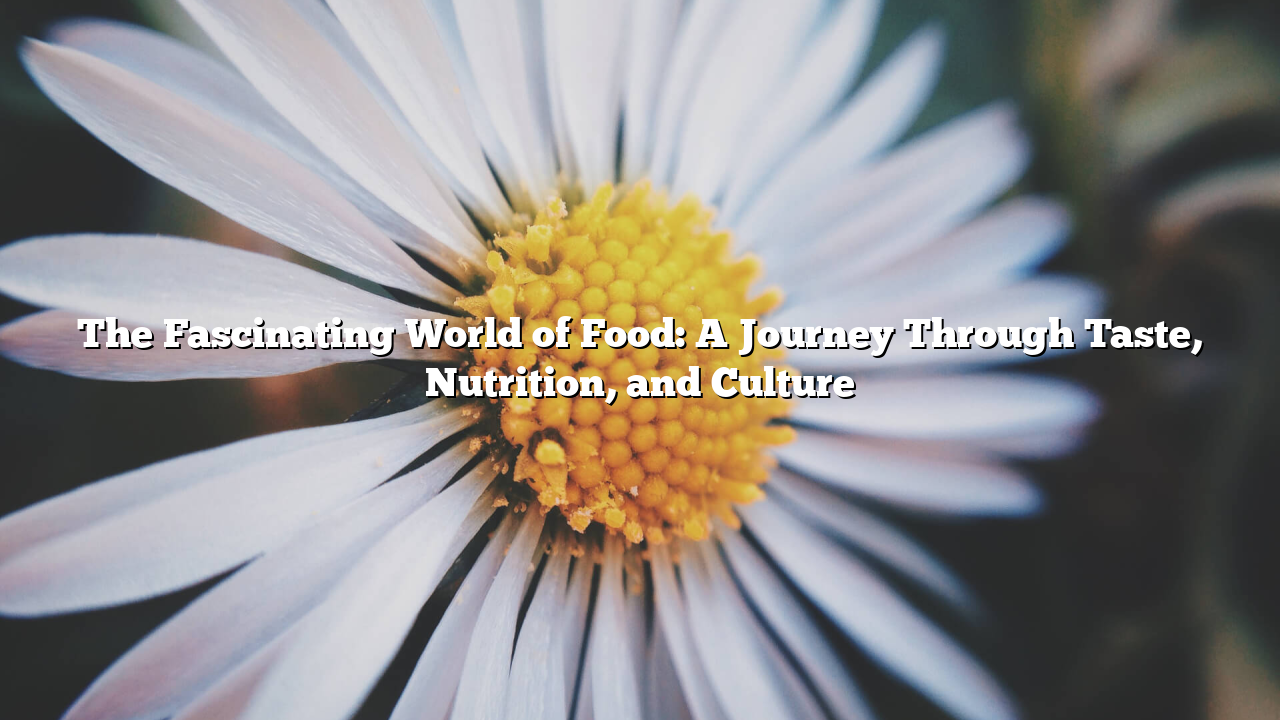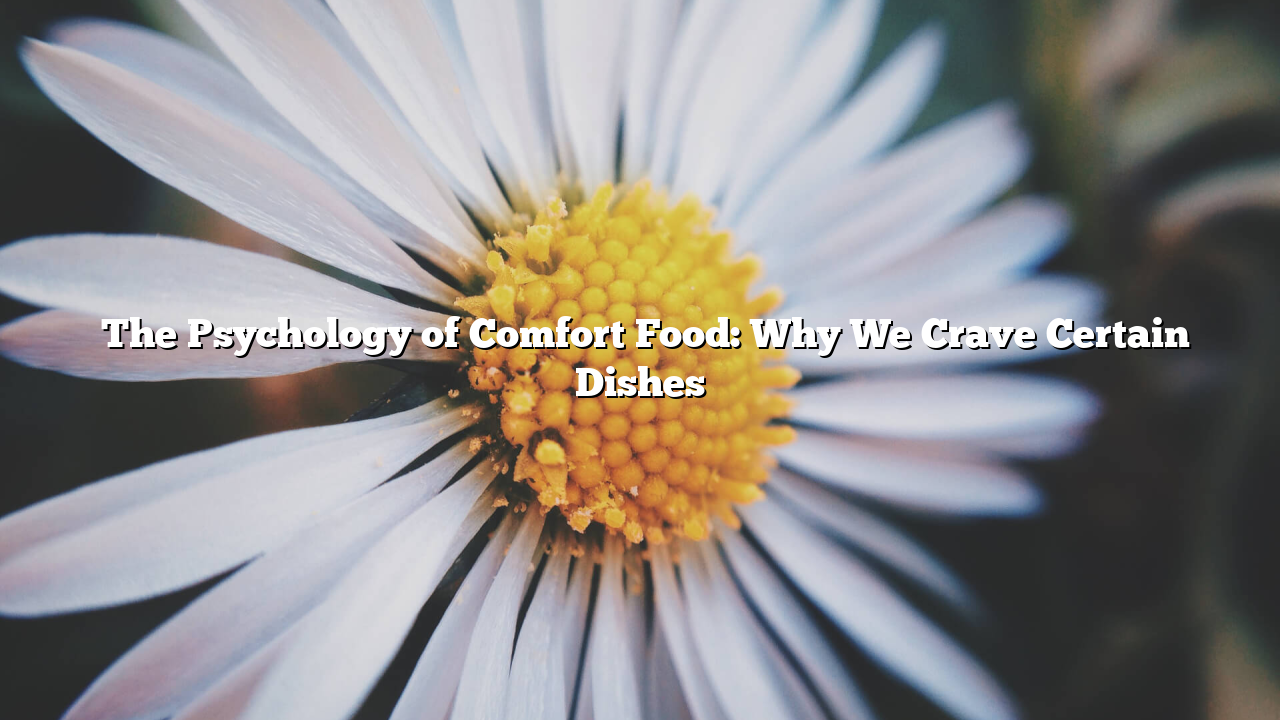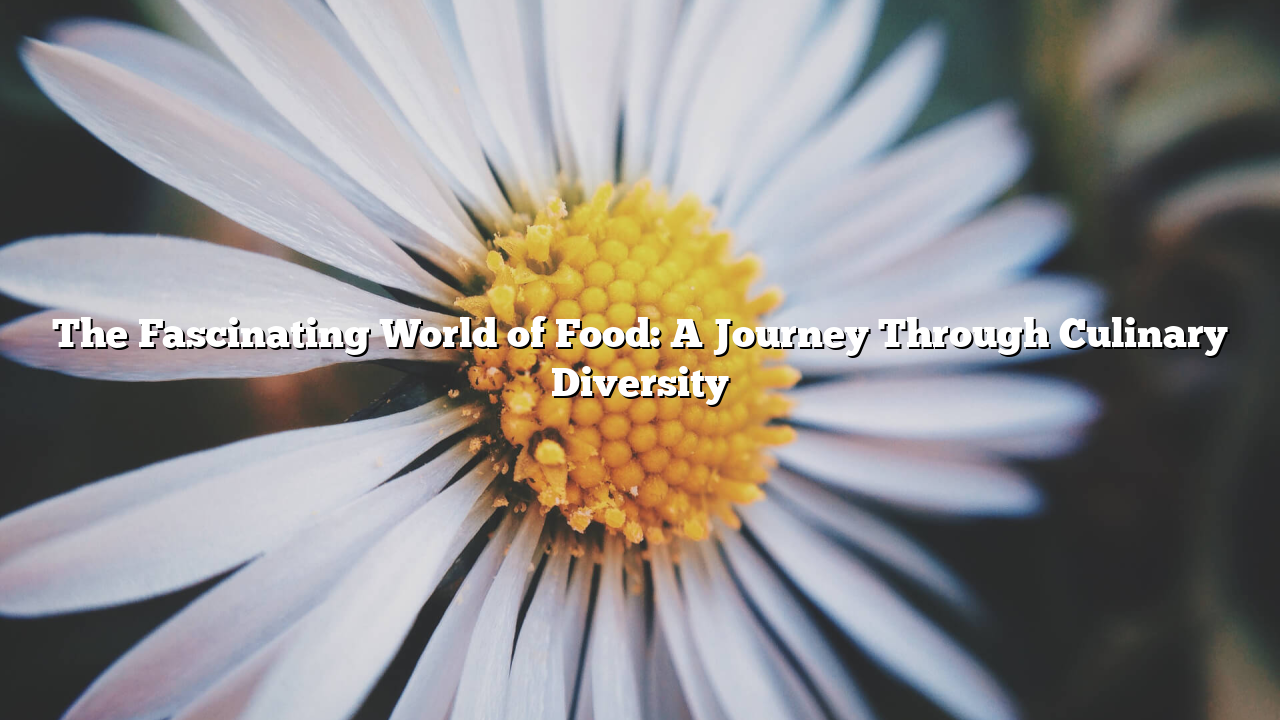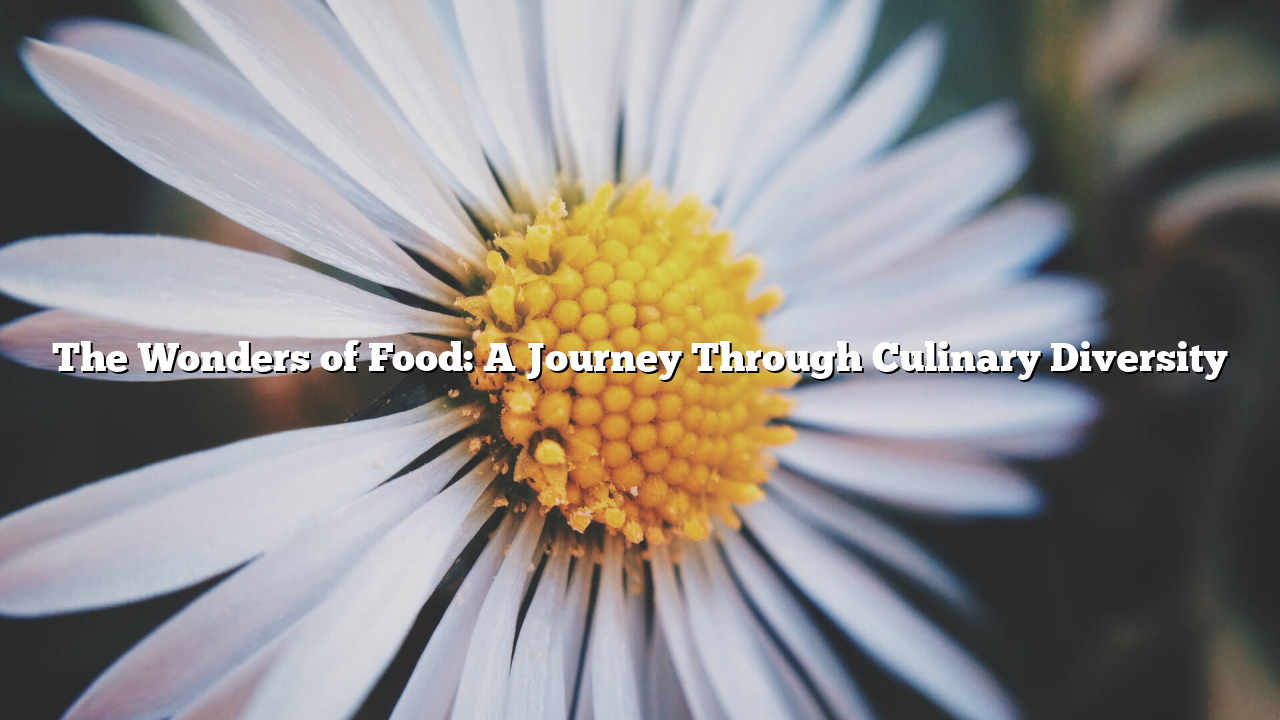Food is an essential part of life, fueling our bodies and providing us with the energy needed
to carry out daily tasks. But beyond its nutritional value, food plays a significant role in
culture, tradition, and social gatherings. From the humble beginnings of agriculture to the
sophisticated culinary innovations of today, the world of food has evolved into a
multi-billion-dollar industry that impacts every aspect of human life. In this article, we will
explore the diverse aspects of food, including its nutritional importance, its cultural
significance, and the future of food in our rapidly changing world.
The Basics of Nutrition: Why We Need Food
At its core, food is the source of the nutrients our bodies need to function properly. These
nutrients can be divided into six main categories: carbohydrates, proteins, fats, vitamins,
minerals, and water. Each nutrient plays a unique role in maintaining bodily functions and
promoting health.
Carbohydrates are the body’s primary source of energy. They are found in foods like bread,
rice, and pasta. Carbohydrates break down into glucose, which provides energy for cells,
tissues, and organs. Without adequate carbohydrate intake, the body would not have the
energy it needs to perform basic functions, from breathing to walking.
Proteins are essential for growth and repair. Found in foods like meat, fish, eggs, and
legumes, proteins are made up of amino acids, which are the building blocks for muscles,
tissues, and enzymes. Adequate protein consumption is vital for maintaining muscle mass
and promoting the healing of wounds and injuries.
Fats, though often viewed negatively, are an essential part of a balanced diet. Healthy fats,
such as those found in avocados, nuts, and olive oil, help with cell function, protect organs,
and aid in the absorption of fat-soluble vitamins (A, D, E, and K). However, it is crucial to limit
the intake of unhealthy fats, like trans fats and excessive saturated fats, to avoid heart
disease and other health problems.
Vitamins and minerals are micronutrients that support various functions in the body, such as
boosting the immune system, improving bone health, and promoting the proper functioning
of the nervous system. They are found in a wide range of foods, including fruits, vegetables,
dairy products, and whole grains. For example, vitamin C, found in citrus fruits, helps
strengthen the immune system, while calcium, found in dairy products, is necessary for
strong bones.
Water is perhaps the most important nutrient of all. Our bodies are made up of about 60%
water, and staying hydrated is essential for maintaining bodily functions such as regulating
temperature, transporting nutrients, and eliminating waste. Water is found in almost all foods,
particularly fruits and vegetables, but it’s important to drink plenty of water throughout the
day to stay hydrated.
Food and Culture: A Connection Beyond Taste
Food is not only a means of survival but also a key component of culture. It serves as a
medium for expressing identity, tradition, and community. Throughout history, food has been
used to celebrate festivals, mark important life events, and bring people together.
In many cultures, food is deeply intertwined with rituals and traditions. For instance, in India,
food plays a central role in religious ceremonies, and special dishes are prepared during
holidays like Diwali and Holi. Similarly, in Mexico, traditional foods such as tamales and mole
are prepared during important celebrations like Día de los Muertos and Christmas. In Italy,
food is at the heart of family gatherings, with long meals spent enjoying multiple courses of
pasta, meat, and dessert.
Culinary practices can also reveal a great deal about a culture’s history and geography. For
example, the Mediterranean diet, rich in olive oil, fresh vegetables, and seafood, reflects the
climate and availability of ingredients in countries like Greece and Italy. In contrast, the food
of colder regions, like Scandinavia, often includes hearty dishes made from preserved
meats, root vegetables, and dairy products, suited to the harsher environment.
Food also serves as a symbol of cultural exchange. The rise of global trade has brought an
influx of new ingredients and flavors to various parts of the world, leading to the fusion of
cuisines. Sushi, originally from Japan, is now enjoyed in restaurants across the globe, while
tacos, a Mexican staple, have become a beloved dish in the United States. These
cross-cultural exchanges highlight the dynamic and ever-changing nature of food.
The Future of Food: Challenges and Innovations
As the global population continues to grow, feeding the world’s inhabitants in a sustainable
and equitable manner has become one of the most pressing challenges. Traditional
agriculture, while highly effective, is not without its environmental impact. Practices such as
deforestation, overuse of water resources, and greenhouse gas emissions contribute to
climate change, threatening food security.
In response to these challenges, innovative solutions are emerging. One such development
is lab-grown meat. Scientists are working on creating meat in laboratories, using animal cells
to produce a product that mimics the taste and texture of traditional meat without the need
for raising and slaughtering animals. ketuaslot has the potential to reduce greenhouse
gas emissions and the environmental footprint of meat production.
Plant-based foods are also gaining popularity, not just among vegetarians and vegans but
also among health-conscious consumers. Plant-based meat alternatives, like those made
from soy or pea protein, are becoming mainstream, offering a more sustainable option for
people who want to reduce their meat consumption.
Vertical farming is another innovation that promises to change the way we grow food. By
growing crops in stacked layers, often in urban environments, vertical farms use less land
and water while producing higher yields. This technique could help address food shortages
in cities and reduce the need for long-distance transportation, which contributes to carbon
emissions.
Furthermore, the rise of food delivery services and meal kits has revolutionized the way
people access and prepare food. These services provide convenience and encourage
healthier eating habits by offering portion-controlled meals and easy-to-follow recipes.
Conclusion
Food is much more than just a necessity for survival. It is a source of pleasure, cultural
expression, and community. Through the study of nutrition, the appreciation of cultural
traditions, and the pursuit of sustainable food systems, we can better understand the vital
role that food plays in our lives. As we look to the future, continued innovation will be key to
ensuring that food remains a source of nourishment, enjoyment, and connection for
generations to come.
The Fascinating World of Food: A Journey Through Taste, Nutrition, and Culture











Leave a Reply